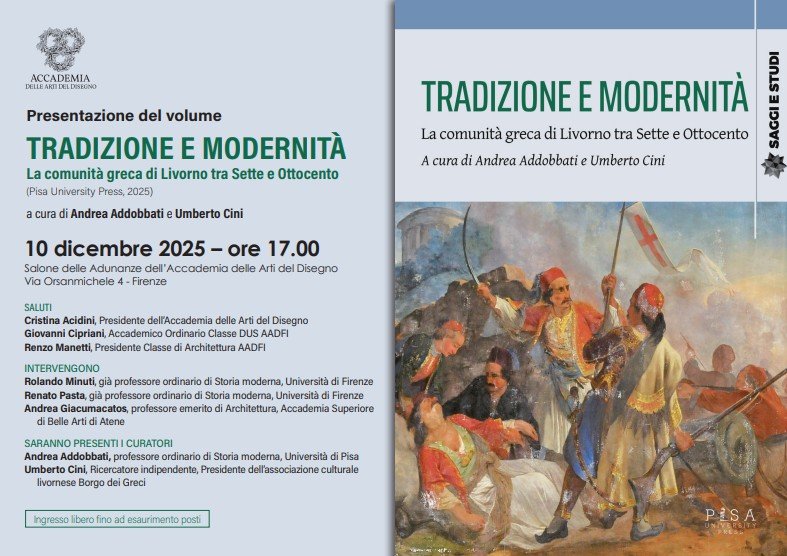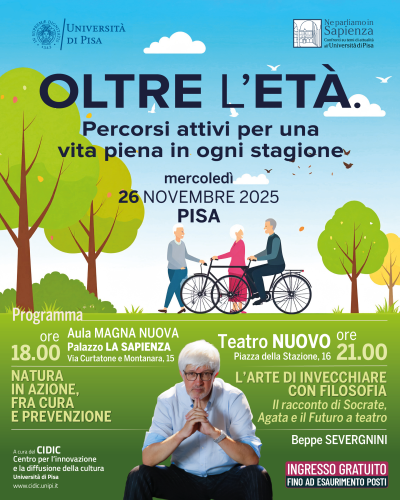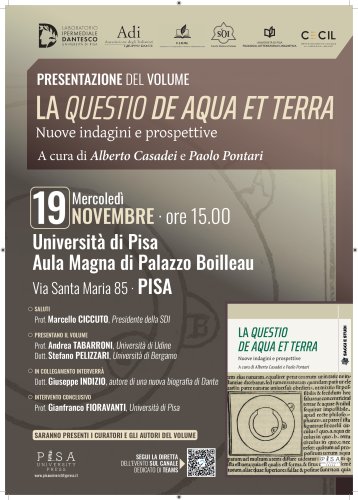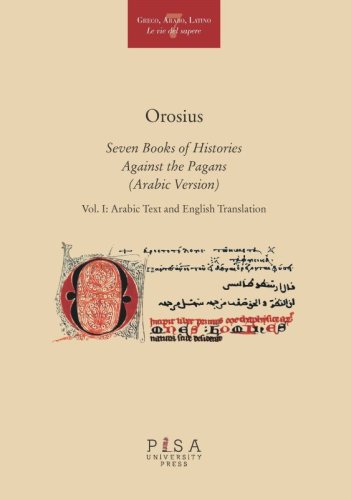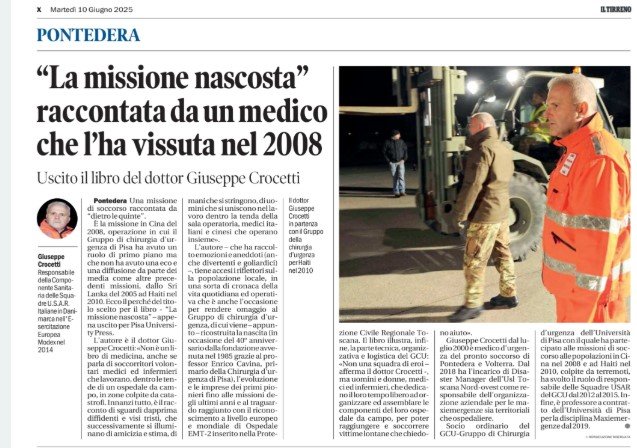Mattia Mancini
Titoli dell'autore
Ancient Egypt and the Surrounding World: Contact, Trade, and Influence
editore: Pisa University Press
pagine: 204
The stark contrast of the desert, mountains, seas, and cataracts surrounding the fertile river valley creates a dramatic separation between Egypt and the rest of the world. Despite this physical – often pretended – barrier, Egypt has historically been deeply connected to the cultures of the Eastern Mediterranean, Western Asia, and Northeast Africa. These interactions have led to a complex intermingling of culture, materials, religions, ideas, and iconography, resulting in the emergence of new forms of cultural identity. The papers of this volume, presented to prof. Marilina Betrò, aim to explore various aspects of these interactions, spanning from the 3rd millennium BC to Roman and Medieval times, encompassing regions from Mesopotamia to the Levant, from Anatolia to the Aegean, and from the Roman Empire to Syria.
– IntroductionGianluca Miniaci, Christian Greco, Paolo Del Vesco, Mattia Mancini, Cristina Alù– Contact, mobility, migration: social and economic interaction across Egyptian borders (Early and Middle Bronze Age)Juan Carlos Moreno García– Between exchanges, interactions, and entanglements. The Egyptians and the others at Mersa/Wadi GawasisAndrea Manzo– Jericho and Egypt during the Early Bronze Age: some evidence of trade and cultural interactionLorenzo Nigro– Patterns of religiosity in the Levant and Egypt during the second millennium BCE: the case of the anthropoid clay coffinsNicola Laneri, Chiara Pappalardo– Secondary Urbanisation in Northern Lebanon and the Role of ByblosFrances Pinnock– Dalla corona osiriaca alla kidaris. Iconografie egiziane in un laboratorio di coroplasti nella Fenicia di età persianaIda Oggiano– Anat und die Zerkauer des FleischesJoachim Friedrich Quack– Notes on Mesopotamian metrology II. The representation of weighing balances in the 3rd millennium BCLuca Peyronel– The Lady of the Mirror. On some artifacts from the Middle Assyrian tomb 1424 at Tell Barri (NE Syria)Anacleto D’Agostino– Reconsidering a Southern Route. Relations between Southern Mesopotamia, Susiana and Egypt at the End of the Fourth Millennium BCSara Pizzimenti– The Hittite-Egyptian Relations Before the Amarna Age: Notes on KBo 31.40 and Related TextsMatteo Vigo– Teli-Teššob, a Hittite Messenger at the Court of Ramesses IIStefano de Martino– Trade, piracy and the protection of sea-lanes in the Mycenaean world and EgyptJorrit M. Kelder– Five Egyptian Scarabs from the Mycenaean Cemetery of Langada on Kos: Context, Function, and Cultural SignificanceSalvatore Vitale, Katarzyna Dudlik, Louis Dautais– The sense of Egypt: The materials and landscapes of otherness in the houses of PompeiiAnna Anguissola– Un nome d’Horo di CaracallaNicola Barbagli– Libri dall’Egitto: la biblioteca privata del patriarca siro-ortodosso Ignazio bar Shayallah (1483-1493)Pier Giorgio Borbone
Egypt in Ancient and Modern Tales, Travels and Explorations
editore: Pisa University Press
pagine: 148
Egypt has long captivated the imagination through its literature, tales, and accounts from ancient and modern explorers. In antiquity, it served as the realm of pharaohs, steeped in myths that intertwined gods and humanity. Herodotus marveled at its wonders, while Napoleon's expedition unearthed its mysteries. The stories passed down to us also offer insights into various facets of everyday life in ancient Egypt–human emotions, connection with nature, and the desire to discover unknown lands. This volume, presented to prof. Marilina Betrò, delves into Egypt’s history, weaving ancient and modern narratives. It explores Egypt not only as a land of wonders but also as a place that resonates with its ancient societies and their perspectives.
– IntroductionGianluca Miniaci, Christian Greco, Paolo Del Vesco, Mattia Mancini, Cristina Alù– Shaping life as a journey and displaying it in biographies and talesJohn Baines– A new reading of an Old Kingdom administrative title (Hry-Szp) related to quarry expeditionsAndrés Diego Espinel– Specialisti di viaggi nel deserto: gli jʿȝ.ww e i nw.w, intermediari e guide per le spedizioni minerarie faraonicheCristina Alù– ‘The mouth of the two ways’: Ezbet Rushdi, a crossroads between Sinai and the Levant in the Middle KingdomFrancesco Missiroli– In the Heart of the Sea: The Island As Chronotope in the Tale of the Shipwrecked SailorAngelo Colonna– ‘Fiori lapislazzuli’: una nota filologica e archeobotanica ad una lirica amorosa del vaso di Deir el-MedinaFlora Andreozzi– Representations on animals in Ancient Egypt: parallel traditions through the millennia. The example of the donkey in the Teaching of ‘OnchsheshonqyMathilde Prévost– Priests Carrying ‘Osiris-Canopus/Hydreios’: from Alexandria to the Imperial Isea outside Egypt. Preliminary considerationsRosanna Pirelli– Il Romanzo di Cambise: alcune osservazioni sulla fortuna di un genere e una nuova proposta di datazionePaola Buzi– First Archaeological Hints: Early Birds in Iraqi KurdistanDlshad Aziz Marf, Jesper Eidem
– “Lo so, ma preferisco non dirlo”. Silenzi e strategie etnografiche in Hdt. IIAndrea Taddei– The Adventurous Life of Giuseppe FerliniGianluca Miniaci– Assassinio nel Museo egizio: The Scarab Murder Case (S.S. Van Dine, 1930)Domitilla Campanile– Le notizie di Simēon Lehac’i sugli Armeni, ottomani e noAlessandro Orengo
The materiality of ancient Egypt: objects and museums
editore: Pisa University Press
pagine: 196
The artifacts housed in museums wield undeniable power, embodying complex and multifaceted histories encompassing their creation, use, modification, reuse, abandonment, rediscovery, analysis, interpretation, display, and reception. The essays collected in this volume, presented to prof. Marilina Betrò, interweave the many stories concealed within museum objects and the archives of the collections that currently safeguard them. This fosters an ongoing conversation between ancient materials, texts, religious beliefs, and modern scholarship and interpretation.
– IntroductionGianluca Miniaci, Christian Greco, Paolo Del Vesco, Mattia Mancini, Cristina Alù– La collezione egizia del Marchese Malaspina a Pavia, la visita di J.-F. Champollion, lo ‘Stabilimento’ di Belle ArtiClelia Mora– The story of restoration of the Egyptian Department, and few surpriseElisabeth Delange– University Museum Systems. Exploring the Historical Evolution and Management Practices in Italy and PisaChiara Tarantino– Digital Egypt: Technological Advances in Musealization and the Frontier of MetaversesNevio Danelon– Reconstructing the biography of the Predynastic fishtailsMona Akmal M. Ahmed– The Palermo Stone: history, digital epigraphy and museologyMassimiliano Nuzzolo– The tomb of Ipiankhu and the recording of Middle Kingdom coffins in EgyptologyWolfram Grajetzki– The diagonal star table fragment P. 4084 at the Museo EgizioEnrico Ferraris– Loret, Lortet et les Onguents des Princesses de DahchourLaure Pantalacci– As told by things. A story told by a cosmetic boxStefania Pignattari– Stele del sacerdote-wab Djehuti a TorinoGloria Rosati– A jar for a woman. A painted pottery vase from GebeleinFederica Facchetti– A Ramesside foundation deposit from the Valley of the Kings at the ‘Museo Egizio’ in FlorenceAnna Consonni– Ramesses VIII and X at Pi-Ramesse?Henning Franzmeier– L’Enveloppe de Momie en Cartonnage d’Hérib – Musée du Louvre E 13018 (AF 13029)Patricia Rigault-Déon– Shabtis of ỉm.y-ḫnt wp-nṯr.wy priests from the collection of Giuseppe AcerbiAlessandro Galli– Demotic Papyrus Archives in the Museo Egizio – Past, Present and Future Research(ers)Susanne Töpfer– Une stèle hiéroglyphico-démotique du Sérapéum de Memphis (Louvre IM 3345)Didier Devauchelle– Retour sur la « tombe de style gréco-égyptien » de TôdChristophe Thiers– The ḳrsw coffin of Tapeny
Christian Greco
Digging for Ancient Egypt and Egyptology in the Archives
editore: Pisa University Press
pagine: 200
Modern Egyptology encompasses more than just archaeological excavations, the study of antiquities, and bibliographic research. It also relies on the invaluable insights gleaned from manuscripts left by travelers, collectors, and scholars of the past. Archives, libraries, and museums preserve a boundless heritage of documents essential for reconstructing the history of ancient Egypt and the evolution of the discipline itself. This volume, presented to prof. Marilina Betrò, contains articles exploring previously unpublished letters, notes, diaries, and research materials from the 17th to the first decades of the 20th century, offering precious insights into historical evidence that might otherwise have been lost.
– IntroductionGianluca Miniaci, Christian Greco, Paolo Del Vesco, Mattia Mancini, Cristina Alù– Tra ideogrammi e geroglifici: la lingua primigenia nella China Illustrata di Athanasius Kircher e nel dibattito coevoChiara Ombretta Tommasi– “Ne mancagli altro se non che un poco di Naso”: il danneggiamento del volto dellaSfinge di Giza in un manoscritto inedito da Modena (1743)Mattia Mancini– Vitaliano Donati e la Iside di CoptosBeppe Moiso– “The Discoveries I Had Been Fortunate Enough to Make in This Country”: Six Unpublished Letters from Giovanni B. Belzoni to William J. Bankes (1817-19)Daniele Salvoldi– I primi anni di vita del Museo Egizio di Torino: Giulio Cordero di San QuintinoTommaso Montonati– Giuseppe Acerbi, Jean François Champollion, and Ippolito Rosellini: A Relationship of Esteem in the Name of Hieroglyphics, Pharaohs, and DynastiesDaniela Picchi– A case of identity? Demetrios Papandriopulos and Giovanni d’AthanasiJohn H. Taylor– La figura del Padre barnabita Luigi Maria Ungarelli dallo studio del Fondo Ungarelli conservato a San Carlo ai CatinariMario Cappozzo– La Spedizione Romana in Egitto (1840-1841) alla luce di nuovi documenti di archivioAlessia Amenta– The Torlonia Obelisks: Neo-hieroglyphic Rhetoric for Rome’s New ElitesLuigi Prada– Ernesto Schiaparelli a Tebe. Documenti inediti sul primo viaggio in Egitto (1884-1885) dell’egittologo piemontesePaolo Del Vesco– Digging up the Origins: The Predynastic Collection of the Museo Egizio (Turin, Italy)Federica Ugliano– Rudolf Dvořák (1860-1920) and his Crucial Role in establishing Czech EgyptologyLadislav Bareš– I reperti da el-Hibeh nel Museo Egizio di Firenze: alcuni documenti inediti dagli archivi
Maria Cristina Guidotti
A Matter of Religions: Gods and People in Ancient Egypt
editore: Pisa University Press
pagine: 200
Religious phenomena can be considered a historical product, mediated by indirect forms, texts, images, objects, and different actors, people, animals, things, and nature. Permeated by a countless panoply of gods, whose identity syncretically merged and divided into different and akin entities, the supernatural seamlessly fuses with daily life matters, and religions are not separable nor meant to be ontologically separated from political, economic, and social questions. The volume of 18 papers, presented to prof. Marilina Betrò, aims to explore the complex dimensions of Egyptian religions, fostering a dialogue between gods, landscapes, animals, and people.
– IntroductionGianluca Miniaci, Christian Greco, Paolo Del Vesco, Mattia Mancini, Cristina Alù– Un “Dieu cerné”? I limiti del potere del faraoneFederico Poole– Animals, Ontology, and Agents of SethWilleke Wendrich– Gender and Divine Identification in Ancient Egyptian Healing SpellsGabriele Mario Conte– Ba and emotions: some notes on the lexeme b3 beyond its religious meaningsStefano Vittori– Notwendige Bemerkungen zum Namen und Wesen der Göttin MuthAlexandra von Lieven– Gehen Götter gerne baden? Zu wAi r, xfty und anderen euphemistisch gebrauchten AusdrückenFriedhelm Hoffmann– Generischer Eigenname versus Götterbegriff, oder: „el“ versus „El“. Vom Zusammenspiel einer älteren semitischen Tradition mit der kanaanäischen Adaption eines ägyptischen Vorbildes im Jh. v. Chr.Ludwig D. Morenz– The sed-festival reliefs at Soleb: rhetoric in image and spaceSusanne Bickel– Doorscapes of the Netherworld and their guardians: a humanist geographical and anthropological perspectiveRita Lucarelli– Reflections on the Ibis Cult at AbydosPaul Whelan– Two Amduat Papyri in LiverpoolSilvia Zago- Interactions between people and territory: the case study of the regionally-specific sacerdotal titles of the Western Harpoon provinceElena Tiribilli– The holders of the title ‘servant of Neith’ in the Late PeriodMarco Zecchi– De nouvelles incarnations d’Isis aux Époques TardivesChristiane Zivie-Coche– Un monument inédit du prêtre SerdjéhoutyOlivier Perdu– Religion and power at the end of the Ptolemaic Period: Reconstructing the cursushonorum of the mr mSa HAwty PachomGiorgia Cafici– The Legal Claim in The Contest for the Prebend of Amun: ‘It belongs to me, it belongs to my father’Kim Ryholt– Statuette in argilla e pratiche magiche nei deipneteria del tempio di Soknopaios: riflessioni preliminariPaola Davoli
The Sacred and the Secular in the Theban Necropolis
editore: Pisa University Press
pagine: 184
The Theban Necropolis is one of Egypt's most captivating archaeological sites. Stretching almost 7 kilometers from north to south on the west bank of the Nile at Luxor, it occupies a broad strip of land between the cultivated fields and the desert mountains and valleys. This extensive site encompasses hundreds of private and royal tombs, monumental temples, smaller chapels and shrines, as well as various settlements. The collected papers, presented to prof. Marilina Betrò, explore diverse aspects of life in the necropolis, including the religious beliefs and rituals of high-ranking officials and priests, the workshops producing funerary objects, and the plundering and reusing of earlier tombs. These studies seek to understand and recreate this intricate ancient landscape.
IntroductionGianluca Miniaci, Christian Greco, Paolo Del Vesco, Mattia Mancini, Cristina Alù 1Il paesaggio funerario e rituale della Valle delle Regine durante il Nuovo Regno IntroductionGianluca Miniaci, Christian Greco, Paolo Del Vesco, Mattia Mancini, Cristina Alù– Il paesaggio funerario e rituale della Valle delle Regine durante il Nuovo RegnoEmanuele Casini– The Opening of the Mouth, Scene 71 in ContextZoltán Imre Fábián– Prayers to Columns’: Six text fragments from Theban Tomb 65Tamás A. Bács– La liturgia del percorso solare nella tomba di Thutmosi III (KV34)Emanuele M. Ciampini– Malédiction sur Osiris. Un entrepôt dans la tombe de Merenptah (KV8) à l’époque byzantine ?Christophe Barbotin– A geometric study of the New Kingdom pyramidiaCorinna Rossi– The Agency of Women in Abnormal Hieratic Legal Documents from the 25th DynastyKoenraad Donker van Heel– Two contemporary queens named Ahhotep at the dawn of the Eighteenth Dynasty: Evidence from the sources and the bracelet Cairo JE 4685Gianluca Miniaci, Camilla Saler– Shabti Boxes in Theban Undisturbed ContextsPaolo Marini– The Black Coffins and the Earliest Yellow Coffins of the New Kingdom from Thebes. New Insights into this Style Transition During the 18th DynastyLisa Sartini– Ancient Robbery and Reuse in the Theban Necropolis: A View from AsasifJulia Budka– The Island of AmenopetNigel Strudwick– Middle Kingdom tomb MMA 28 and its significance for the construction history of the Hatshepsut temple at Deir el-Bahari. Out of respect for the royal ancestorsPatryk Chudzik– Funerary settlements of the Third Intermediate Period in the RamesseumHélène Guichard– Les bois utilisés à la Troisième Période Intermédiaire au RamesseumMaria Victoria Asensi Amorós– Economic Activities in the Theban Necropolis During the New Kingdom. A Case Study of Woodworking at Deir el-MedinaAnna Giulia De Marco– Il visir Khay e la comunità degli artigiani di Deir el-MedinaChristian Orsenigo– Documenting Contexts and Contextualizing Objects: Report of the 3D Survey and Modeling Activity at M.I.D.A.N.05Emanuele Taccola









